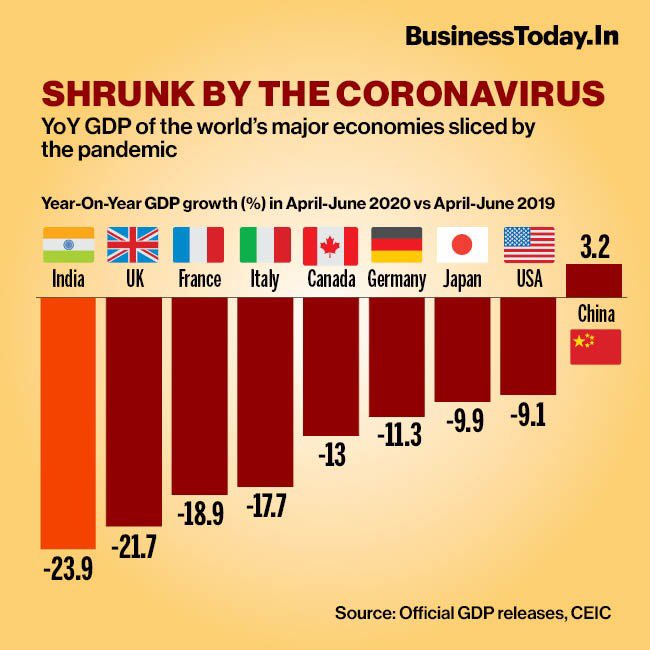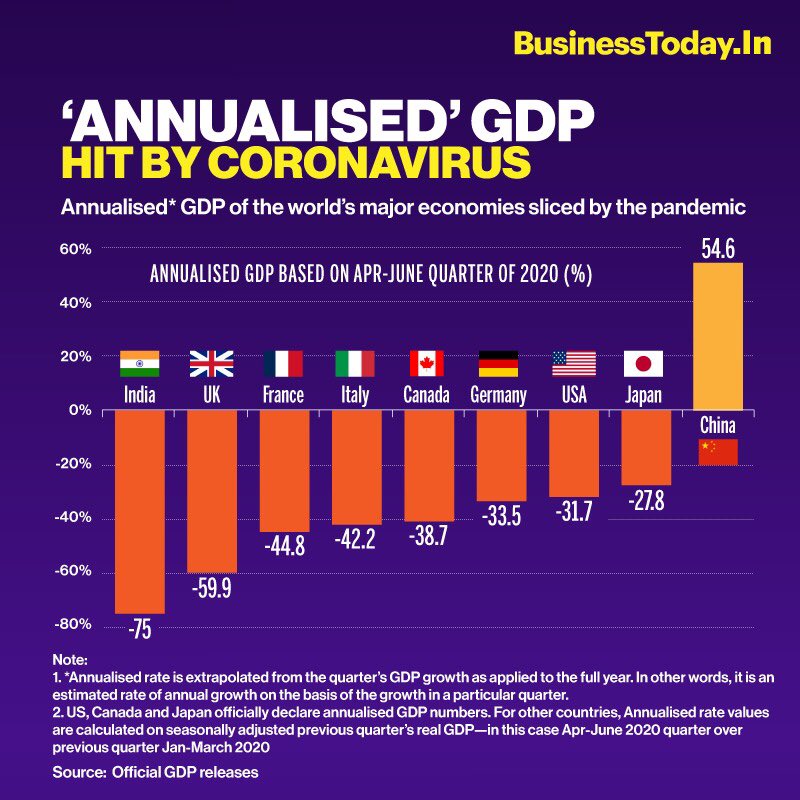Growth of GDP is generally reported quarterly on YoY basis in real terms, i.e., the growth rate of 5% means increase of GDP in current quarter by 5% as compared to GDP in same quarter previous year in real terms.
As with most macroeconomic variables, GDP has seasonality and that is why the QoQ is not reported.
For example for india the FY Q1 (Calender Q2) has a less than 1 seasonal factor. So the QoQ of this quarter will always be low and therefore misleading. For Q1 FY 2020-21, India's QoQ growth rate is -27.1%.
Coming to annualized rate: it is the growth rate of GDP if the economy continued to grow (shrink, in this case) at the same pace as the current QoQ growth rate.
So if the QoQ is, say, 2% then annualized rate would be:
$$((1+0.02)^4)-1)*100=8.24$$
In the above example:
$$((1-0.2928)^4)-1)*100=74.98$$
Now in general in Central bank communications and research analysis work, the annualized rate is calculated on deseasonalized QoQ growth, otherwise you ate misleading the reader. The newspaper here seems to have ignored that, perhaps intentionally to magnify the contraction of economy and is most certainly misleading.
On the second part of your question: $75%$ economic of economic contraction does mean collapse. In worst of recessions this does not happen in a period of just one year. In theoretical terms, it is equivalent to everyone's income in the economy to decrease by $75%$.
You can rather think like this: Overall income last year was say $100$. Q1 of India's FY generates income of little less than $25$ (say, $22$ - seasonality effect). Given a negative growth rate of about $23.9%$, actual income generated is about $16.75(=(1-0.239)*22)$. Now as economy opens up, income generated in Q2-Q4 may not be $78$ but somewhere around may be $70$ (or $65$, who knows). So total income would be about $82-87$. Overall, therefore, the annual contraction may come-out to be of around $13-18%$. Certainly not $75%$!!


